-
Featured News
Catching Fire: The Story of Anita Pallenberg
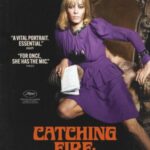 By Harvey Kubernik
Catching Fire – The Story of Anita Pallenberg, debuts in New York as a sneak preview at 7:30 pm at IFC Center on Thursday, May 3, 2024 and may open at more theaters at a later
By Harvey Kubernik
Catching Fire – The Story of Anita Pallenberg, debuts in New York as a sneak preview at 7:30 pm at IFC Center on Thursday, May 3, 2024 and may open at more theaters at a later -
Featured Articles
The Beatles: Their Hollywood and Los Angeles Connection
 By Harvey Kubernik
JUST RELEASED are two new installments of the Beatles’ recorded history, revised editions of two compilation albums often seen as the definitive introduction to their work.
Or
By Harvey Kubernik
JUST RELEASED are two new installments of the Beatles’ recorded history, revised editions of two compilation albums often seen as the definitive introduction to their work.
Or -
The Rolling Stones’ 2024 North American Tour…and so much more

By Harvey Kubernik
The Rolling Stones will embark on their North America! Stones Tour ‘24 Hackney Diamonds which kicks off on April 28, 2024 in Houston, Texas. The band will be performing in 16 cities across the US and Canada following the success of their chart-topping studio album Hackney Diamonds, which received a Grammy nomination for its lead single “Angry.”
In 1997 I did an interview with Keith Richards where we discussed touring and stage repertoire.
“Once you’re on the stage it’s just some floor boards in spite of it. And you’re not really aware of everything you are seeing. But what really keeps tours going and alive for the band and therefore for the audience I think is to change it and to play the smaller joints indoors. And the small stage with the show.
“It’s necessary to change the scale sometimes. Otherwise, you can really get used to the large thing. And you realize when you’re playing a small gig that you get dynamics back and you can re-translate that back to the big stage.
“In a way, maybe when you write songs without even knowing it, you’re kinda saying, ‘Can I do this live?’ And so, in a way you add that in. You don’t know if it’s gonna work, but I guess you keep in the back of your mind is ‘We’re making a record here. What happens if they all like it and we gotta play it live?’ So, in a way, that maybe in the back of the mind it sets up the song to be playable on stage.”
Guitarist Don Peake, before he was on recording sessions with the Jackson Five, Barry White, Ray Charles, Marvin Gaye, Sonny & Cher, the Monkees, and Phil Spector, first encountered Keith and the Rolling Stones from a1963 Don Arden-produced UK tour he did with the Everly Brothers. Also on the bill were Bo Diddley, Julie Grant, Mickie Most, and the Flintstones.
Don had sat with Keith Richards on many occasions, coaching and showing him instrument tips at various stops on the trek.
“I have picked up as many hints on guitar playing as I can from Don Peake, who is the Everly Brothers guitarist,” volunteered Richards in a 1963 edition of New Musical Express. “He really is a fantastic guitarist, and the great thing about him is that he is always ready to show me a few tricks.”
Today, around his sessions and live gigs, music teacher Peake is on the faculty at the Bridges Academy in Los Angeles, a college prep school.
##

The Rolling Stones playing surprise set on October 19, 2023 in New York City. (Photo by Kevin Mazur/Getty Images for RS)
“Performing to me is something you’re born with in some ways,” offered Mick Jagger in 2008 at a Santa Monica, California press and media viewing of the Martin Scorsese-directed 2006 Shine A Light concert film of the Rolling Stones performances at the Beacon Theatre.
“You can learn some of it-and you have to-but ultimately, I think that performing urge is within you and the best shows are from people who just naturally take to it. I don’t know where the energy comes from, it’s just there.”
The Rolling Stones and Mercury Studios released The Rolling Stones Live At The Wiltern on DVD + 2CD; Blu-Ray + 2CD, 2CD, 3LP (3 variants: Black, Gold (D2C Exclusive), and Black & Bronze Swirl (Amazon Exclusive) on March 8, 2024.
One of the greatest box-office successes of 2002/2003, 117 shows grossing over $300 million, the Rolling Stones’ Licks World Tour—in support of their 40 Licks compilation—celebrated the band’s 40th anniversary in splendid fashion, highlighted by this intimate November 22 Los Angeles show at The Wiltern. With its 2,000+-seat capacity, it would prove to be a welcome respite from the global stadiums and arenas.
I was in attendance, courtesy of Charlie Watts. This was a unique gig when tunes like “Stray Cat Blues,” “No Expectations” and “Everybody Needs Somebody To Love” (complete with the co-author of this 1964 soul classic, Solomon Burke) rocked the venue.
##
There are additional Stones-centric documentaries, audio reissues and books that are now available.
In May, Magnolia Pictures and SK Global Entertainment will present Catching Fire: The Story of Anita Pallenberg. Directed by Alexis Bloom and Svetlana Zill, with words of Anita Pallenberg read by Scarlett Johansson from Pallenberg’s unpublished memoir. The film comes to theaters and VOD on May 3rd.
Catching Fire: The Story Of Anita Pallenberg is about a woman who was at many points in her life a newspaper headline: Anita Pallenberg was a “rock n’ roll goddess,” a “voodoo priestess,” and an “evil seductress.” She was accused of trying to break up the Rolling Stones, among other things. But those who loved her considered her an exciting cultural force, and a loving mother – and innocent of the accusations.
Never-seen-before home movies and family photographs explore life with the Rolling Stones and tell a bittersweet tale of both triumph and heartbreak. From Barbarella to the Swiss Alps, and the Lower East Side to London, Anita Pallenberg was a fascinating creative force ahead of her time.
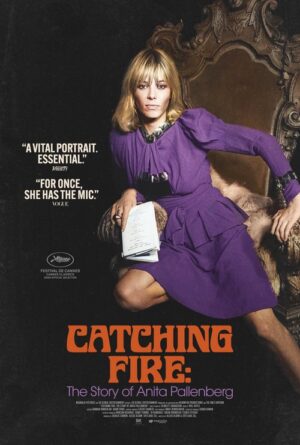
“Anita Pallenberg,” emphasized photographer and music journalist Heather Harris, “surpassed her gorgeous European fashion model classification by seeming to be, to all who encountered her, one of the most reckless extroverts to ever stride the planet.”
It’s a terrific documentary about this glorious muse, fashion icon, and actress, who was the co-star of Performance.
Andrew Loog Oldham served as manager and record producer of the Rolling Stones 1963-1967. In July 2023 I queried Andrew about Anita via email.
“Anita joined the group in late ’66. We had come back to the UK, sorta burnt out from four years on a rock ‘n’ pop world tour, and all the recordings. We did one last UK tour with the Ike & Tina Turner Revue. Then the psychedelic period kicked in, the result was Satanic Majesties Request. I left three weeks into that, probably 24 hours before I would have been asked to leave. Allen Klein may have taken over the money, but Anita, and Marianne [Faithfull] to a lesser extent, took over the game. And the game was strong and the band moved successfully to where they stay today.”
In 1995 I interviewed Marianne Faithfull. She praised Anita and also mentioned Pallenberg was working on an autobiography.
“Like most of the time I don’t remember what people were wearing. I remember what Allen [Ginsberg] was wearing, because often, Allen would take his clothes off. So, I would know that and understand that. And that’s a very simple situation.
“Now Anita actually remembers things only through what we were wearing, ‘cause that’s what she’s interested in. I don’t mean that as a put down,” she smiled. “But that’s how she remembers things. When I say, ‘Do you remember such and such a day…?’ The way back for Anita is ‘Oh yeah… You were wearing a red velvet …and I was wearing…’ You’d dig her, man.”
In 1994, Anita Pallenberg graduated from Central Saint Martin’s in London with a fashion and textile degree.
##
Also from Magnolia, in 2023, was Nick Broomfield’s documentary The Stones & Brian Jones which uncovers the true story and legacy of Brian Jones, the founder and creative genius of the Rolling Stones.
As a schoolboy aged 14, Nick Broomfield met Jones, by chance, on a train. Brian was at the height of his success, with the world at his feet, yet just six years later he would be dead.
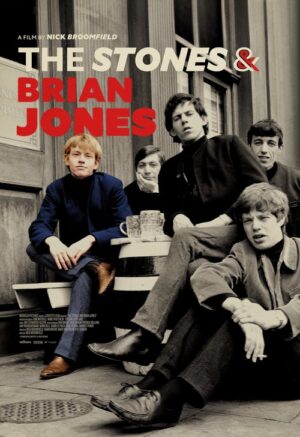
Brian Jones was the golden boy of the Rolling Stones, the visionary who gave the band its name, and helped shape their 1963-1969 sound. His contributions turned the Mick Jagger-Keith Richards tunes into pop culture benchmarks and trailblazing hits.
The Stones & Brian Jones looks at the relationships and rivalries within the Rolling Stones in those formative years. It explores the iconoclastic freedom and exuberance of the 60s, a time of intergenerational conflict and sexual turmoil which reflects on where we are today.
Implementing interviews with all the main players and unseen archive released for the first time, The Stones & Brian Jones explores the creative musical genius of Jones, key to the success of the band, and uncovers how the founder of what became the greatest rock ‘n’ roll band in the world was left behind in the shadows of history.
Nick Broomfield says of his inspiration to make the film, “The Rolling Stones were a major influence in my formative years. Brian and Mick were heroes of the day, their rebellion and breaking of the rules were a great inspiration to us.”
In February 2024, the documentary was released on DVD by Magnolia Home Entertainment.
##
During a 2013 interview with well-respected record producer and artist manager Denny Bruce, who represented arranger/composer/songwriter and record producer, Jack Nitzsche, Bruce discussed his 1966-1969 encounters with Marianne Faithfull, Anita Pallenberg, Brian Jones and Keith Richards.
“Being in Los Angeles in 1966, Keith and Brian wanted to know if anybody, like Lowell Fulson, was playing at any blues club in town? ‘Tramp’ by Lowell was number one this week on their turntables. Jack took the whole band to Watts to see Etta James at the California Club. I went to one of the Aftermath sessions at RCA.
“In fall of 1967 I heard the final mix of Neil Young’s ‘Expecting to Fly’ recording on Buffalo Springfield Again one night at Jack’s house. Keith Richards and Anita Pallenberg were there. Jack said it was ‘the perfect recording to smoke pot with.’
“Earlier that afternoon I drove Keith and Anita in my Volkswagen to Disneyland. My first Cali car. I clearly remember driving my VW bug with Keith and Anita. That was it – just the three of us. Anita got in and then Keith got in, but didn’t move the seat to get in the back. So, it was hard to drive and shift gears with Anita’s crotch on the floor mounted gear shift.
“She beamed and said, ‘This is fabulous being in a Volkswagen in Los Angeles!’
“Somewhere in the 1967 or ’68 time period Mick, Keith and Jack worked with Marianne Faithfull on ‘Sister Morphine.’
“Keith and Anita liked getting out of the hotels. Marianne and Anita liked to swim in Jack’s pool. During their visit we went out to eat several times. A little French place in West Hollywood near Fairfax High School comes into mind. ‘Sister Morphine’ was written at Jack’s house, during the days of hanging by the swimming pool.
“What people forget was it was hard just to get into Disneyland in those days if you had long hair. I was lucky with Keith and Anita as it was a slow day there, and he was not wearing anything unusual. But showing up as five people, looking like a band, would have caused trouble with security. Jack and I were hassled when we went there with Buffy St Marie, who was performing an afternoon show.”
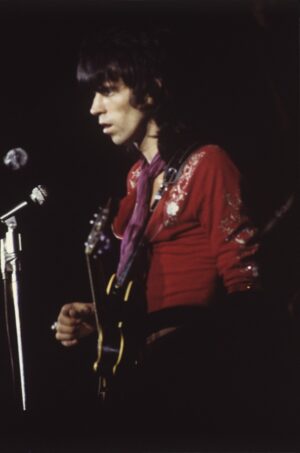
Keith Richard at the Los Angeles Forum, November 8, 1969. (Photo by Henry Diltz)
In October of 1969, Bruce and Richards went shopping for clothes and rare record albums. Denny schlepped Keith over to Ed Pearl’s Ash Grove music club on Melrose Avenue which housed a record section run by collector Chris Peake. Keith forked out some big bucks for a rare 1965 copy of The Cool Sounds of Albert Collins. Denny at the time managed Collins.
Nitzsche did the choral arrangement for the choir on “You Can’t Always Get What You Want” from the Let It Bleed album. He phoned Merry Clayton to sing on “Gimme Shelter.” Nitzsche was a major contributor to both the Aftermath and Between the Buttons albums.
In the Stones’ recorded catalog, his keyboard, harpsichord and percussion work can be heard on such gems as “Play With Fire,” “Yesterday’s Papers,” and “Sister Morphine.” He played tambourine and piano on “Satisfaction,” and was the pianist on “Let’s Spend the Night Together.”
During 2000, I conducted an interview with Jack Nitzsche at his Beachwood Canyon home. Jack and I talked about the film Performance. His epic soundtrack is still popular and was groundbreaking in terms of music merger. Blues, spoken word and electronic score in one package with Mick Jagger co-starring in a movie role.
“The Rolling Stones had nothing to do with it. It was Mick who came to me about doing the soundtrack. In fact, Keith and Mick wouldn’t even talking to each other during those days. Somebody came to them to do a movie, which was Christian Marquand, who directed the film Candy. (Director) Donald Cammell was close to the Stones. He knew who I was from the beginning, and they didn’t have time to score the film. Nor did they want to.
“So, I went to London for some reason, and saw the film during that time. They were doing Let It Bleed. The movie blew my mind the first time I saw it. Jesus Christ… I saw it without music. It’s very tame without music. It doesn’t take you to that crazy place. This is the only movie I have ever done where nobody interfered. Nobody.
“Donald Cammell would drop by the studio once in a while. He let me do whatever I wanted. I did the soundtrack at Western here in Hollywood. When I was in London, the apartment they got me was right around the corner where Keith was living with Anita.
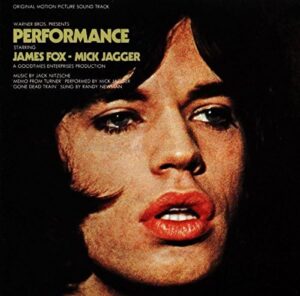
“I thought ‘Memo From Turner’ had a clever lyric. I felt Mick was going in another direction from the band.
“With the film music I was allowed to do musically whatever I wanted to do. No instructions from the director. Nobody telling me yes or no. I did anything I wanted to do I could do. That’s what I did. You know, made up things in the studio. It was amazing. I like both the vinyl and the CD. But I have a thing for vinyl, but I like what CD does too.
“Anita on the screen. God damn. You saw the film. I would want to see the film again. I want to see what’s holding that film up. To this day, I’ll be in a restaurant, or walking down a street, or leaving a screening on a lot somewhere like at Paramount, and someone will mention Performance. Recently (director) Billy Friedkin saw me walking across the street and yelled ‘Performance! The greatest use of music in a motion picture ever!’ That was nice.
“I co-wrote ‘Gone Dead Train’ which Randy Newman did on the soundtrack.”
“If I were to try and define Jack’s overall contribution, I’d say he provided the melodic bond, the undercurrent to Keith and Brian’s layers of guitar brainwash,” detected Andrew Loog Oldham.
“Jack was always the consummate pro. Jack gave us an understanding of tone. Which tone fits the universe? Jack understood microphone placement, where band members sat and instrument leakage. One other thing. Jack had a grasp of, and interest in sex. How to inject sex into the sound. That is a gift of understanding between you and your third ear.”
##
I’d like to recommend a box set ABKCO Records issued last February, The Rolling Stones Singles 1966-1971. The limited-edition collection includes reproductions of 18 7” vinyl singles and extended play records, as originally released by Decca, London Records and ABKCO Records. The compilation serves as a second volume and companion to The Rolling Stones Singles 1963-1966 (ABKCO, 2022).
All tracks were remastered by 13-time Grammy Award-winning engineer Bob Ludwig, and the discs are manufactured by Third Man Pressing in Detroit.
The set, replete with period-correct picture sleeve art, also comes with a 32-page book containing extensive liner notes by Stones authority Nigel Williamson, as well as rare photos and ephemera, plus a set of five photo cards and a poster, all housed in a hard-shell box.
The Rolling Stones Singles 1966-1971 spans a crucial period in the band’s evolution, when their move towards the experimental and psychedelic sounds of “We Love You” and “She’s a Rainbow” gave way to the rootsy, blues-based rock of “Honky Tonk Women” and “Wild Horses.”
Singles 1966-1971 contains both the US and UK versions of the 45; the latter’s B-side “Long Long While” is a rare non-LP track. Other rare B-sides in the set include “Who’s Driving Your Plane” from “Have You Seen Your Mother, Baby, Standing In The Shadow?,” and “Child Of The Moon” from UK #1 “Jumpin’ Jack Flash.”
The collection faithfully reproduces that controversial record art, and also includes the 1971 UK maxi-single version of “Street Fighting Man,” with “Surprise Surprise” and “Everybody Needs Somebody To Love.”
While not technically a Rolling Stones song, Mick Jagger’s “Memo From Turner” from the Jack Nitzsche-produced Performance soundtrack is incorporated here. Originally released as a single in 1970, the song features slide guitar by Ry Cooder, and its B-side “Natural Magic” is a Cooder instrumental.
While every track on The Rolling Stones 1966-1971 box set was recorded in the time frame suggested by its title, some of the records were originally released later. “I Don’t Know Why,” “Out Of Time” and the stereo mix of the 1969 #1 hit “Honky Tonk Women” were 45s that came out in 1975-76, around the time ABKCO issued the Stones rarities album Metamorphosis.
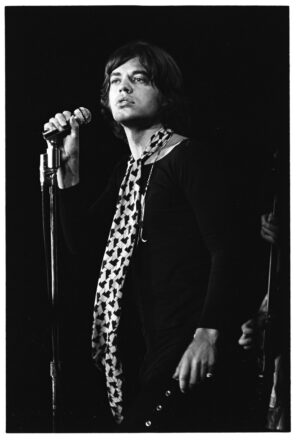
Mick Jagger at the Los Angeles Forum, November 8, 1969 (Photo by Henry Diltz)
“Sympathy for the Devil” was remixed separately by the Neptunes and Fat Boy Slim in 2003 and originally released as part of a Super Audio CD at the time – it’s here as a 7” vinyl record.
Stones collectors can also take satisfaction in the mono mixes of “We Love You” and its flipside “Dandelion” (1967), which both contain a reprise at the end with an ode to the other track. These are both exclusive to the single release.
I suggest you take a listen to the Rolling Stones’ catalog in mono. Especially their 1964-1967 studio excursions.
“To understand why these mono mixes are so important, you have to know the historical environment,” acknowledged novelist Daniel Weizmann. “The music’s original delivery system – 45s and AM radio – was a total contrast to the world around it. In those days, you didn’t hear rock music at the supermarket, the stationery store, or the car wash. The piped-in instrumentals were ‘hi-fidelity’ and crystal clarity was the gold standard. This new sound coming over the car radio was a thunderous onslaught, a dirty stampede in which no one instrument, not even the lead singer, could steal the spotlight.
“Compare any one of these tracks to something from the great Tutti Camarata or, say, a Bobby Darin 45 and you can immediately hear the difference. The Stones, more than most of their contemporaries, had a different set of sonic intentions – with hidden piano parts, tape bleeds, and a rumbling bass that seems to seep out onto every other instrument. It’s what set them apart. They aimed to disrupt.”
“I bought Out of Our Heads for $2.98 at Frigate Records in what is now West Hollywood in that glorious summer of 1965,” volunteered author and musician Kenneth Kubernik. “I still own it. ‘Mono’ is prominently displayed on the front cover; the alternative version, for a buck more, had something called ‘electronically reprocessed stereo’ or some such nonsense which made little sense to my eleven year old brain.
“Stereo was reserved for my friends’ parents’ hi-fi systems, to play Mantovani (also on London Records) or Andy Williams with strings albums. Since we were still immersed in buying singles, the concepts of mixing, mastering, track separation, etc. made no impact. It was just the electric charge of that opening riff on ‘The Last Time,’ or Jagger’s commanding ‘That’s How Strong My Love Is…’ which centered our attention,
“It was until years later that I finally heard the stereo mix of ‘…Satisfaction’ and the distant tinkle of Ian Stewart’s piano (or is that Jack Nitzsche?) and Keith’s acoustic guitar finally made its presence felt. That’s fine for our current epicurean sensibilities; as a kid way back then, though, it was more than enough to sing along to the jangly, unkempt ‘Under Assistant West Coast Promo Man,’ whoever he was.”
“I heard something else in these unified mono mixes, though — a seriousness, a self-conscious commitment to announcing the power of this blues/R&B music and living out the freedom it seemed to promise,” observed poet and deejay Dr. James Cushing.
“That seriousness comes through in the unified sound of the mono mixes. ‘Here are these songs,’ the albums say. ‘They are the essence of what we do and who we are.’
“Actually, the Stones were ahead of the Beatles in terms of their use of stereo! Aftermath, from early ‘66, offers a stronger, more realistic stereo mix than Revolver or Sgt Pepper. Not being contractually tied to Abbey Road Studios, the Stones could sample a wider variety of engineering concepts and the early records really benefit from that,” summarized Dr. Cushing.
“Well, our first six years of TV was all black and white because we didn’t have color in England until 1968,” underscored bass player Bill Wyman in a 2002 interview I conducted.
“All the [television] shows, like Ready, Steady Go! were all shot in black and white. The band were a black and white band. They were a mono band sound wise so we always tried to mix in kind of a mono feel. We didn’t have things right out wide on the left and right. It was only the record companies that did that with fake stereo and stuff which sounded bloody horrible in the mid-‘60s. We always tried to mix our sound to sound monish because we liked that sound, that ballsy thing, and everybody else cleaned it up, didn’t they?”
Andrew Loog Oldham and Jimmy Miller are the producers of these ABKCO mono and stereo recordings of the Rolling Stones.
Before Oldham and the band parted company during 1967, Andrew produced the group’s first fifteen singles, including “Satisfaction” which, in the second half of ’65, went to # 1 in 38 countries. Additionally, he produced their first ten LPs and first three EPs.
“We did ‘Tell Me’ at Regent Street studio,” reminisced Andrew in a 2004 interview with me. “Keith’s guitar leaked throughout the bass drum because there weren’t enough microphones to go around. And you have to remember it was basically the first song Mick and Keith wrote together that they recorded for themselves. ‘Tell Me’ was sexy.
“I just remember the relationship between the drum kit and the acoustic guitar. You could only overdub once more. Mono to mono. You can hear the leakage,” he volunteered.
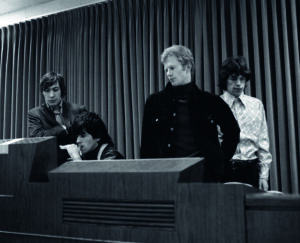
Charlie Watts, Keith Richards, Andrew Loog Oldham and Mick Jagger at RCA Hollywood, December 1965. (Photo by Gered Mankowitz)
“Then we went to Hollywood. RCA. Studio A. Which was huge. I went, ‘This is it. We have our home.’ I met engineer Dave Hassinger in there, Of course, he was doing a session. Dave Hassinger looked like Los Angeles.
“I think there are two tambourines on ‘Satisfaction.’ There’s a regular one that easily could have been Jack Nitzsche. But in the middle, it was too American for that part and that’s Brian Jones. And Jack plays piano. He was brilliant, man. Come on. The piano on ‘Satisfaction’ and ‘Let’s Spend the Night Together’ was just turnaround Charlie.
“Between the Buttons and Aftermath, without a doubt quite a few harried moments. And we did it in Hollywood at RCA. Aftermath works. They wrote every song on the record. It’s like when you go see a stage show or see a movie that works. One of the keys is ‘besides the fact that’s it’s not me on stage. That’s me.’ So, there is a sense of humor with the songs and the records. We’re in Hollywood. Some of Hollywood came through the door and I’m one of the conduits dragging it in,” underlined Andrew.
“Aftermath and Between the Buttons, and, in the US, Flowers, were some of my finest hours as Mick and Keith reached the ability to compose whole albums for the Stones. The songs were just brilliant, only eclipsed by the idea that the Beatles, Ray Davies and, coming up through the ranks, Pete Townshend, wrote better.
“The media and the BBC would just not accept what damn fine writers Mick and Keith had turned into. Wonderful social commentaries that had their roots somewhere between vaudeville and the BBC World Service,” Andrew suggested. “I’m not just talking about the obvious, ‘Satisfaction’ and ‘Paint it Black. I’m talking ‘She Smiled Sweetly,’ ‘Connection,’ ‘All Sold Out,’ and ‘Back Street Girl.’ The laconic comments, the posed rancor, Mick and Keith’s songs at that time cut right through the picket fence and into the very life of them.
“There’s incredible clarity to what they were doing. It was like a linear thing. Filmic. They were vivid, and the key to that vividness was Brian Jones. The organ on ‘She Smiled Sweetly’ by Brian is just amazing. I like ‘She Smiled Sweetly’ more than ‘Lady Jane’ and ‘Ruby Tuesday.’ ‘Sweetly’ was boy/girl, living on the same floor. Whereas both those other songs have a ‘to the manor born’ quality to them. Trying to write and evoke. I love ‘Out of Time.’ On the initial recording it’s Mick Jagger pulling off Jimmy Ruffin.”
##
There are two new photo-driven books on the Stones to enjoy.
The Rolling Stones Rare and Unseen: Photographs by Gered Mankowitz, with a foreword by Keith Richards and an afterword by Andrew Loog Oldham is published by Welbeck. Legendary photographer Gered Mankowitz helped to shape the very image of the Stones, shooting record covers, he delves deep into his incomparable archive, uncovering the hidden gems that have remained unpublished and unseen for over 50 years – until now.
Alongside his iconic and much-loved images that captured the Stones at their swaggering best, these photographs show the band unguarded and unvarnished – young men in the eye of a rock ‘n’ roll storm, with the world at their feet. Hundreds of photographs are accompanied by Gered’s memories and revealing memories and essays on the band by authors including author Will Hodgkinson and the New York Times‘ Ben Sisario.
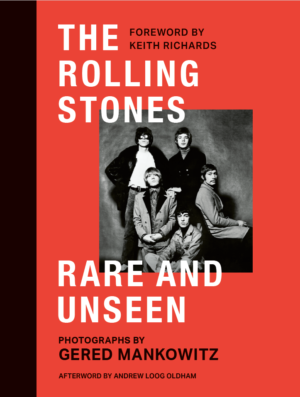
“It always appeared to me that Andrew Loog Oldham was integral to those early sessions at RCA Hollywood for the Aftermath album and also at Olympic throughout 1965/66 & 67,” reinforced Mankowitz in a 2024 email. “He had great ears for a hit and always seemed to be completely aligned with the band and their process.”
“Gered was there for the fun part of the journey,” stressed Andrew in a 2024 correspondence. “When we all pulled together. Once we were regarded as employees we bailed.”
##
ACC Art Books Ltd in late 2023 published The Rolling Stones: Icons. (Full disclosure: I penned the introduction to this volume.) The book includes iconic, rare and unseen images of the Rolling Stones. Each photographer has selected images for their chapter and written an introductory text about their time working with the band. The Rolling Stones: Icons brings together the greatest photographs ever taken of the greatest rock ‘n’ roll band of all time. The result is a very important anthology of the Rolling Stones’ images ever compiled, featuring the iconic, the awe inspiring and the surprising.
Spanning six heady decades, and countless tours and album covers, this portfolio features imagery from some of the most eminent names in photography, alongside the photographers’ own memories and reflections.
![]()
From Terry O’Neill’s images of the young, uncompromising new band taken in Denmark Street, through Michael Brennan’s photos of their creative peak in the ’70s, and on to the stadium tours of the 21st-century, as shot by Greg Brennan, The Rolling Stones: Icons captures many of the milestone moments of the band’s career.
The photographs are by Terry O’Neill, Michael Ward, Gered Mankowitz, founding Stones member Bill Wyman, Linda McCartney, Michael Joseph, Tony Sanchez, Dominique Tarle, Ed Caraeff, Barry Schultz, Al Satterwhite, Michael Brennan, Ken Regan, Brian Aris, Denis O’Regan, Douglas Kirkland, and Greg Brennan.
“As far as photographing the Rolling Stones, the Stones seemed more like five individuals,” posed Terry O’Neill. “And Andrew Loog Oldham understood. When I worked on a newspaper if I couldn’t get over to his office to photograph someone, he’d bring them over to The Daily Sketch office and I’d photograph them. Marianne Faithfull came over one day. Can you imagine that happening today?”
“Something very powerful is happening in those photos that’s way beyond a shtick or a bad boy pose,” theorized writer Daniel Weizmann to me. “See, until then, all of showbiz was really built on this basic unspoken agreement: the entertainer is there to wow the audience, please the audience. And the Rolling Stones, in those photos, they mercilessly break that contract… the same way Dostoevsky broke the basic reader/ storyteller connection, the same way Picasso shatters our visual centre.
“The Stones manage, by calling the terms of the exchange, to reverse objectification. Even in black and white, the Beatles we meet are something fun for us to look at. Whereas the Rolling Stones are staring right back at us, as if to say. ‘You define us? No, no, we define you’.”
(Portions of this story initially appeared in the May/June 2024 issue of Record Collector News magazine.)
© Harvey Kubernik 2024
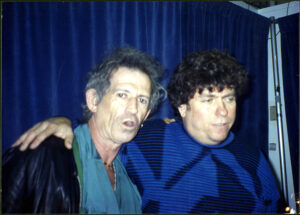
Keith Richards and Harvey Kubernik in San Diego, February 1999.
HARVEY KUBERNIK in 1969 witnessed his first two concerts by the Rolling Stones in Southern California at the Inglewood Forum. He caught five shows by the band in 1972 when they returned to the area, and in 1975 attended five dates in the Southland.
In 2013 Harvey was filmed for the BBC-TV documentary on Bobby Womack, Across 110th Street, directed by James Meycock. Womack, a longtime associate of the Rolling Stones, co-wrote their first hit single in the US, “It’s All Over Now.” Bobby Womack, the Stones’ Ronnie Wood, Regina Womack, Damon Albarn of Blur/the Gorillaz, and Antonio Vargas are spotlighted.
Kubernik is the author of 20 books, including 2009’s Canyon Of Dreams: The Magic And The Music Of Laurel Canyon, 2014’s Turn Up The Radio! Rock, Pop and Roll In Los Angeles 1956-1972, 2015’s Every Body Knows: Leonard Cohen, 2016’s Heart of Gold Neil Young and 2017’s 1967: A Complete Rock Music History of the Summer of Love. Sterling/Barnes and Noble in 2018 published Harvey and Kenneth Kubernik’s The Story Of The Band: From Big Pink To The Last Waltz. In 2021 they wrote Jimi Hendrix: Voodoo Child for Sterling/Barnes and Noble.
Otherworld Cottage Industries in 2020 published Harvey’s Docs That Rock, Music That Matters. His writings are in several book anthologies, including The Rolling Stone Book of the Beats and Drinking with Bukowski.
Harvey wrote the liner notes to the CD re-releases of Carole King’s Tapestry, The Essential Carole King, Allen Ginsberg’s Kaddish, Elvis Presley The ’68 Comeback Special, The Ramones’ End of the Century, and Big Brother & the Holding Company Captured Live at The Monterey International Pop Festival.
During 2006 he spoke at the special hearings initiated by The Library of Congress held in Hollywood, California, discussing archiving practices and audiotape preservation. In 2017 Kubernik appeared at the Rock & Roll Hall of Fame in Cleveland, Ohio, as part of their Distinguished Speakers Series. Since 2012 Harvey has been the Editorial Director of Record Collector News magazine).